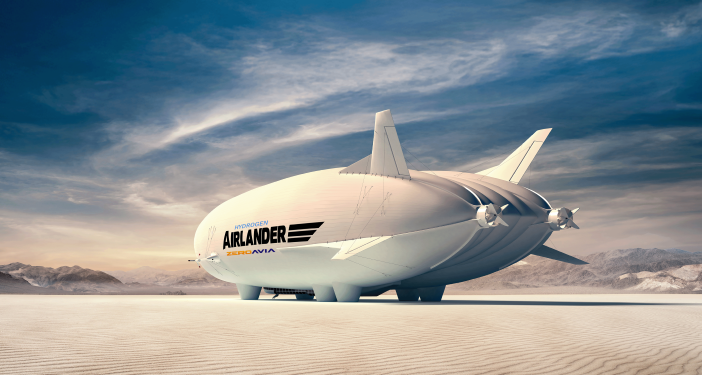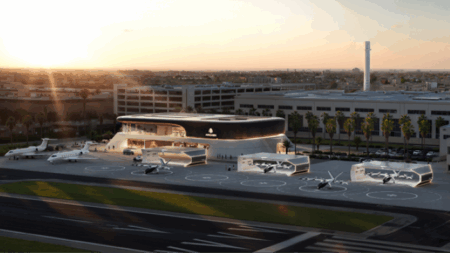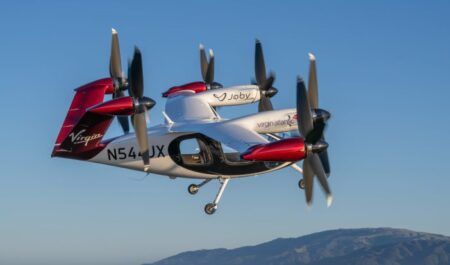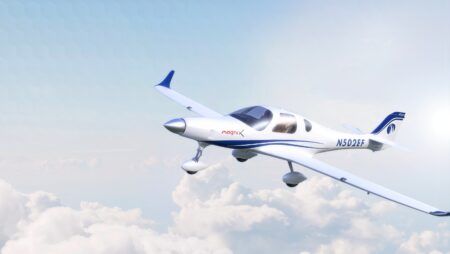ZeroAvia and Hybrid Air Vehicles have signed a Memorandum of Understanding to partner on the development of a hydrogen-electric variant of the Airlander 10.
The Airlander 10 is a new type of hybrid aircraft that uses a combination of aerostatic lift, aerodynamic lift and vectored thrust.
The 302 x 143ft (92 x 43.5m) Airlander 10 can carry up to 100 passengers and 10 tonnes of payload. The helium-filled hull makes the hybrid aircraft part lighter-than-air blimp and part airplane.
Hybrid Air Vehicles (HAV) plans to begin flight testing a production version in 2027 with Type Certification to follow. It has previously said it expects entry into service during 2028.
The initial Airlander 10 will be powered by four diesel engines. This configuration provides an emissions reduction of up to 75% when compared with aircraft of comparable capacity, thanks to efficiency savings according to HAV.
The company plans to offer a hybrid-electric variant of the Airlander 10 in 2029, before going fully-electric in 2030.
Hydrogen agreement
Under the agreement, HAV and ZeroAvia will explore equipping Airlander aircraft with four of ZeroAvia’s hydrogen-electric ZA600 powertrains. Integrating the hydrogen-electric propulsion system aims to deliver full zero-emission in-flight operations while carrying 100 or more passengers.
The hydrogen-electric configuration will also provide reduced maintenance costs, according to the companies. ZeroAvia’s first-generation 600kW hydrogen-electric powertrain is designated the ZA600.
The ZA600 has passed several regulatory milestones and secured hundreds of pre-orders. ZeroAvia has signed launch customer airlines including Alaska Airlines, Logan Air and is working to embed the system into fixed-wing aircraft.
ZeroAvia has conducted flight testing of a prototype ZA600 system on board a 19-seat aircraft. The company has submitted its first full engine for certification for aircraft with up to 20 seats.
The company has achieved test and regulatory milestones with the US FAA and UK CAA. ZeroAvia, based in Kemble, UK, is also developing a larger powertrain for 40-80-seat aircraft.
The Airlander’s hull provides ample space for hydrogen storage. This makes the aircraft a suitable platform for adopting the first generation of certified hydrogen technologies.
These technologies include hydrogen storage, low-temperature proton exchange membrane (PEM) fuel cell power generation and electric propulsion systems. These systems are progressing through to certification, said ZeroAvia.
The partnership will also build on HAV’s earlier R&D work to explore electric propulsion for Airlander. Hybrid Air Vehicles, based in Bedford, UK, is developing the Airlander 10 for production at a facility in South Yorkshire, UK.
As part of the agreement, the companies will study the potential applicability of ZeroAvia’s hydrogen-electric technology to future larger aircraft developed by Hybrid Air Vehicles. The companies will also assess planned Airlander 10 operations to define the hydrogen fuel infrastructure requirements.
Tom Grundy, CEO of Hybrid Air Vehicles, said, “ZeroAvia has led the development of hydrogen-electric propulsion systems and made impressive progress commercially, technically and with regulators.”
